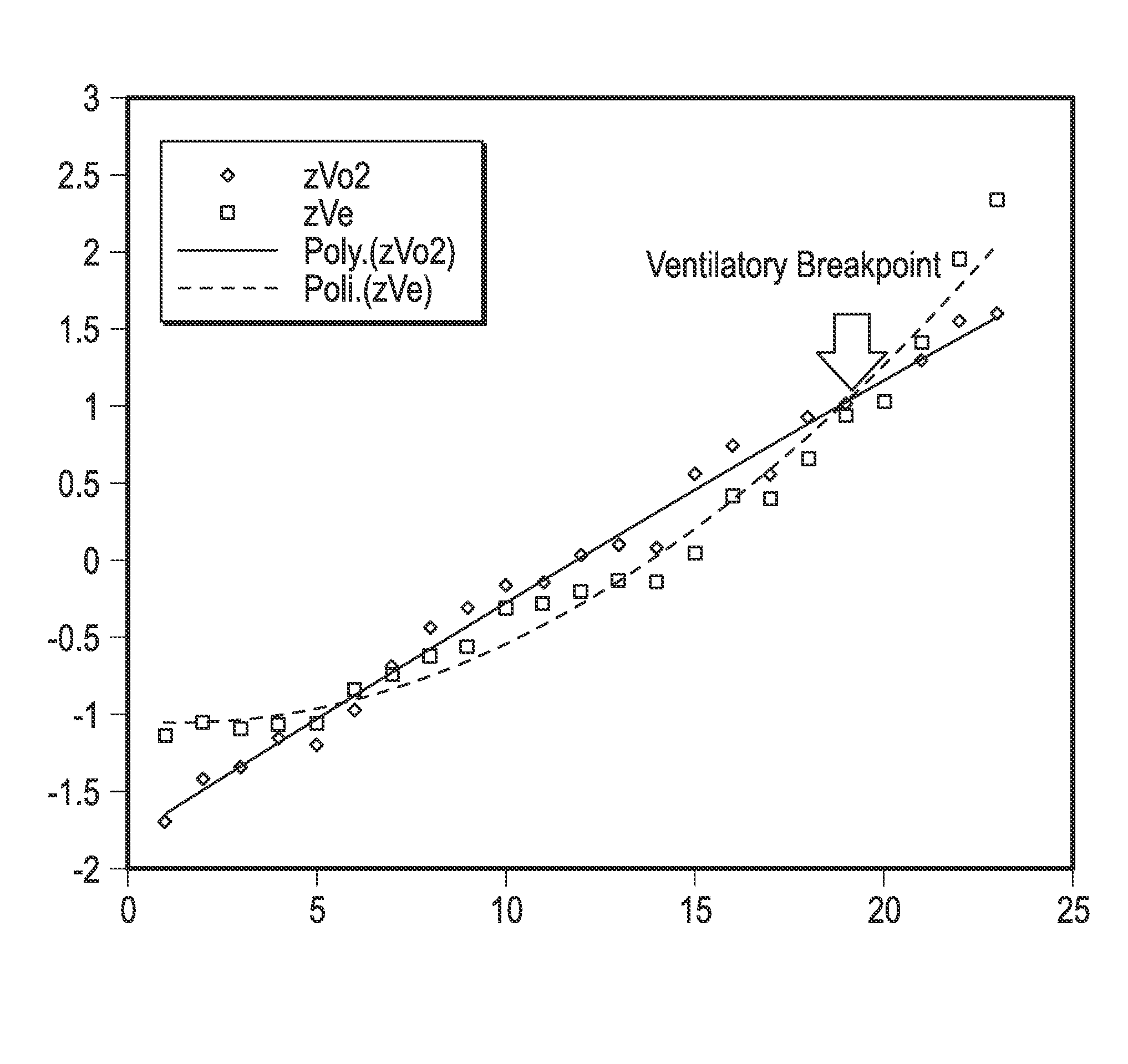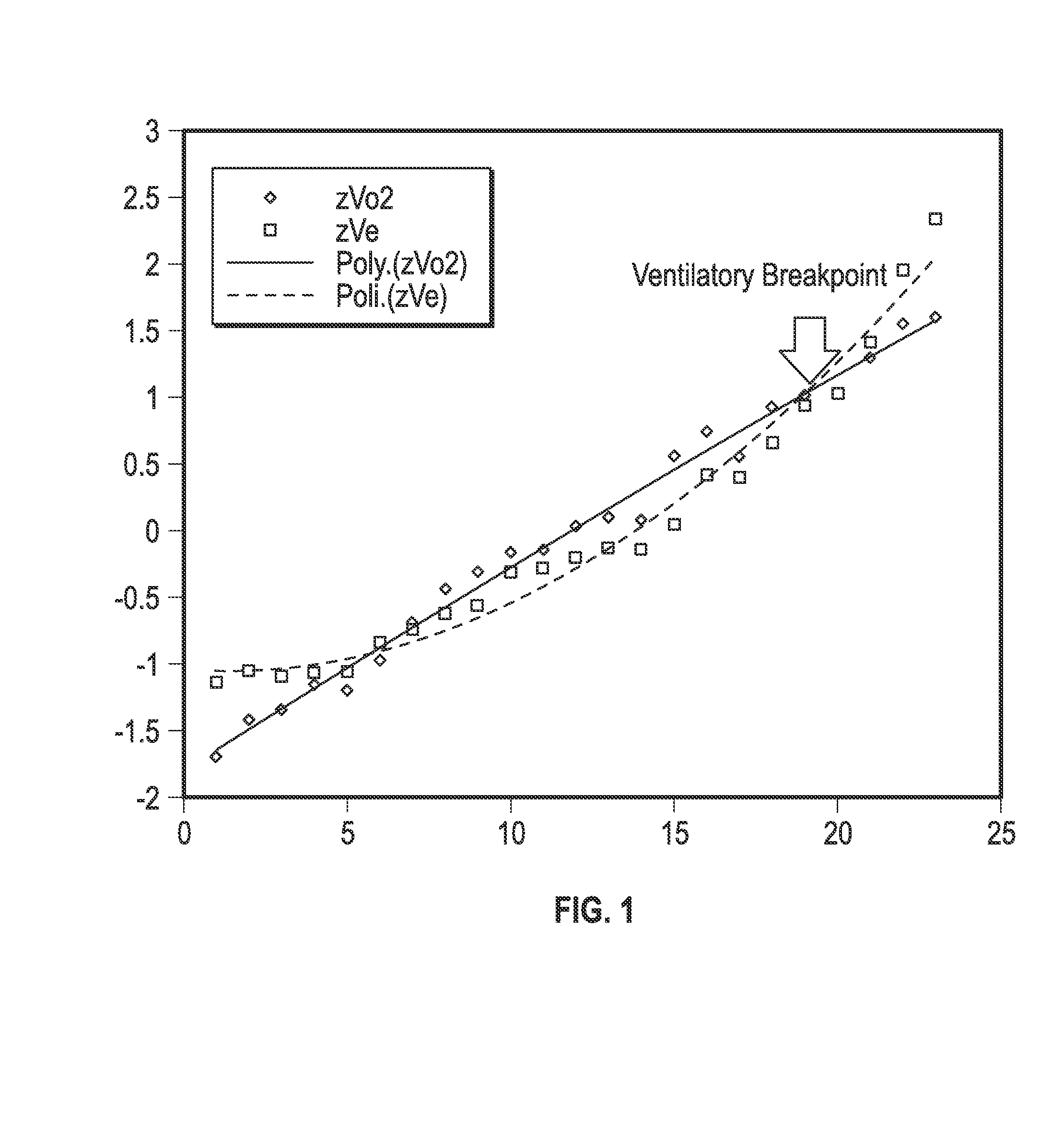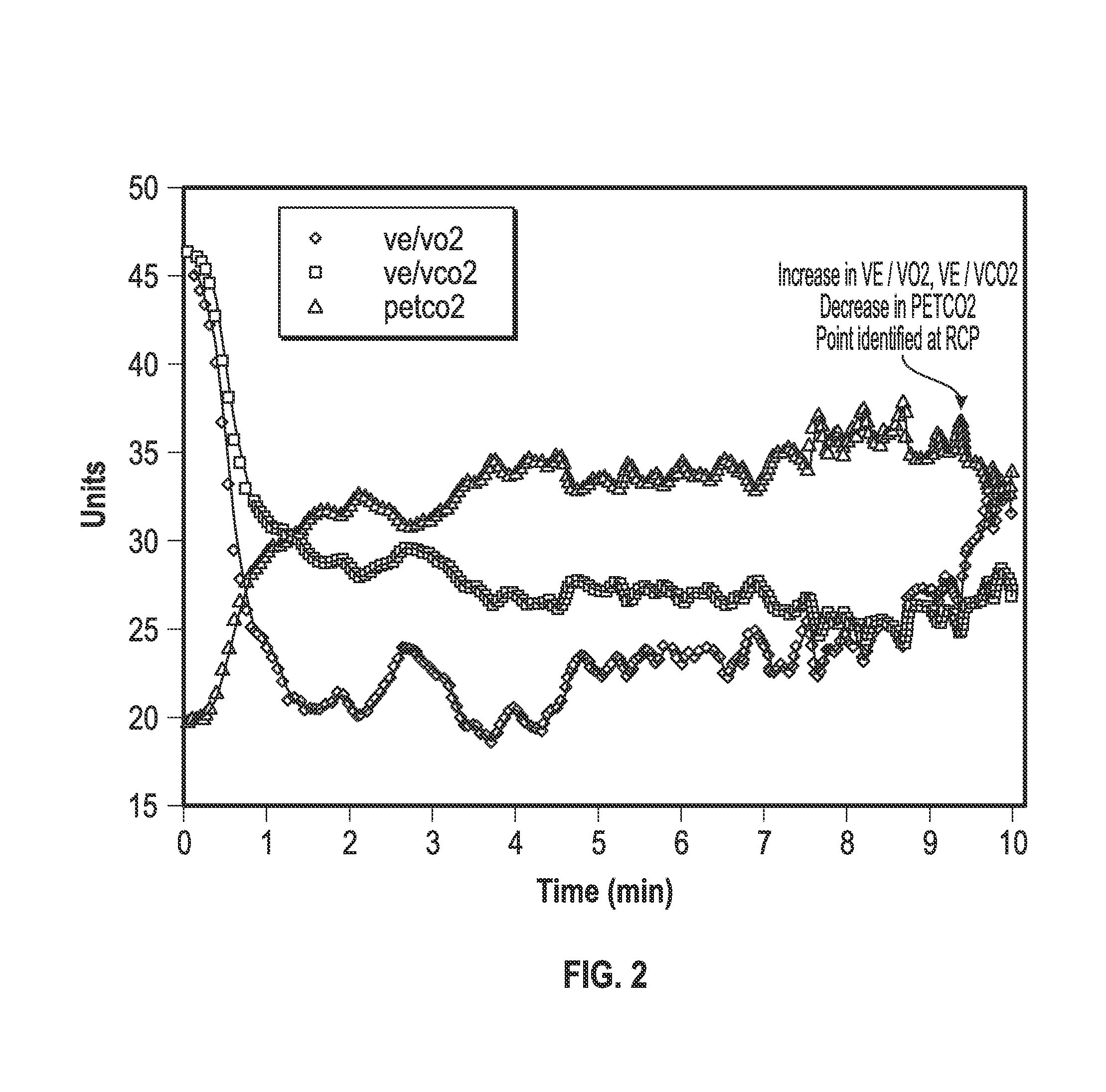Method for developing individualized athletic training program
a technology of athletic training and training program, applied in the field of individualized exercise training program, can solve the problems of human error in identification, further deterioration of rcp determination methods, and introduction of unwanted variability and errors, so as to improve the prediction of race performance, enrich the experience of students, and improve the effect of performance prediction
- Summary
- Abstract
- Description
- Claims
- Application Information
AI Technical Summary
Benefits of technology
Problems solved by technology
Method used
Image
Examples
Embodiment Construction
[0017]The invention disclosed herein presents a novel method for developing a training program for endurance athletes using RCP determination and standard score transformation of VE and VO2 data.
[0018]In the preferred embodiment, the athlete's height and mass are first determined using a triple beam balance with a stadiometer attachment. The balance is first checked for proper calibration. Next, the athlete's mass is captured by manipulating the masses on the balance. The athlete is then positioned facing away from the stadiometer and instructed to stand erect with the heel of the feet together and the toes pointed slightly outward. Once alignment with the stadiometer was checked, the athlete is instructed to take a deep breath and hold the breath by standing erect. Once the participant is in the proper position, the arm of the stadiometer is lowered to rest on the crown of the head and a height reading is determined. Additional embodiments may consider other means of measuring heig...
PUM
 Login to View More
Login to View More Abstract
Description
Claims
Application Information
 Login to View More
Login to View More - R&D
- Intellectual Property
- Life Sciences
- Materials
- Tech Scout
- Unparalleled Data Quality
- Higher Quality Content
- 60% Fewer Hallucinations
Browse by: Latest US Patents, China's latest patents, Technical Efficacy Thesaurus, Application Domain, Technology Topic, Popular Technical Reports.
© 2025 PatSnap. All rights reserved.Legal|Privacy policy|Modern Slavery Act Transparency Statement|Sitemap|About US| Contact US: help@patsnap.com



